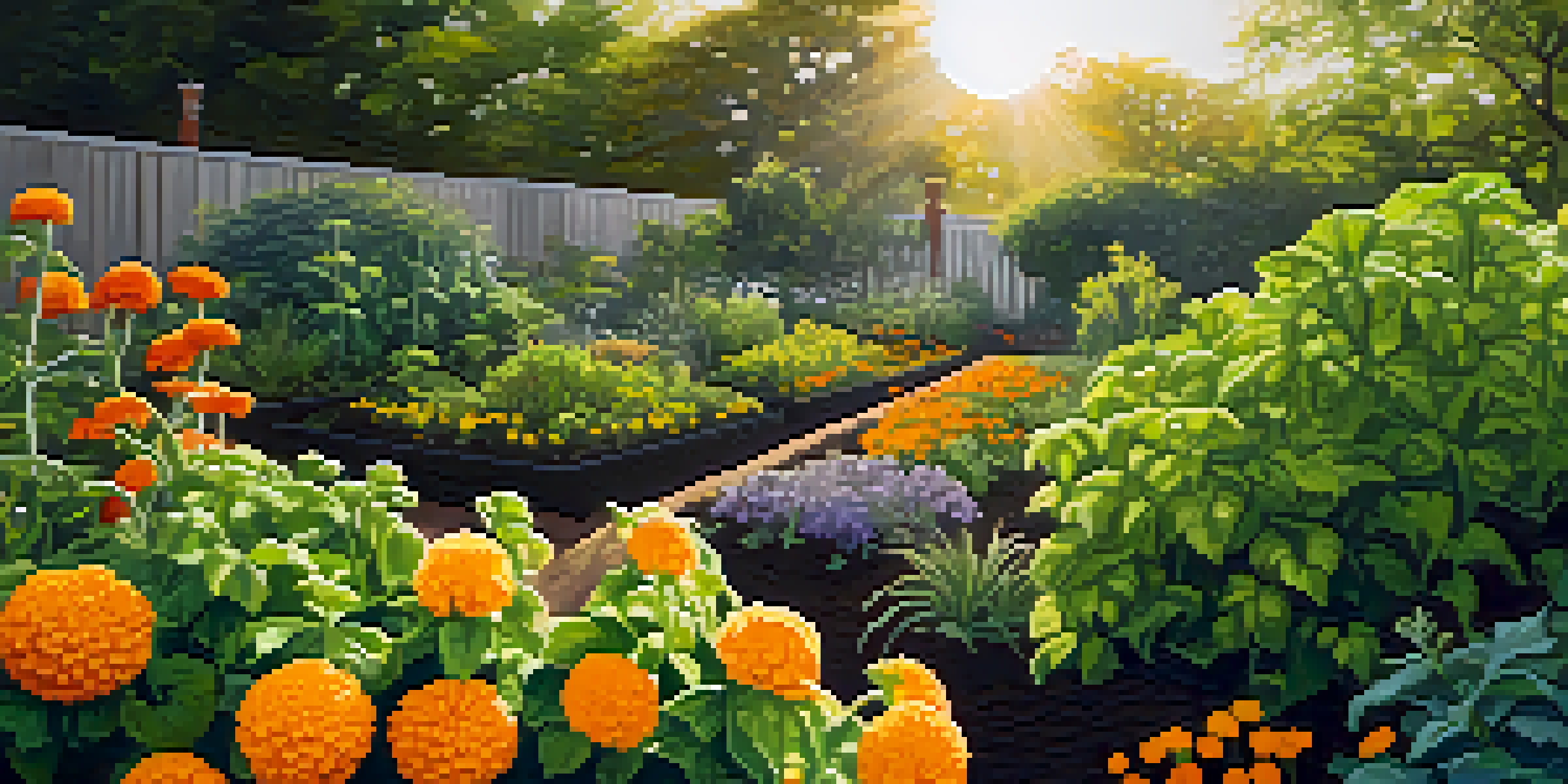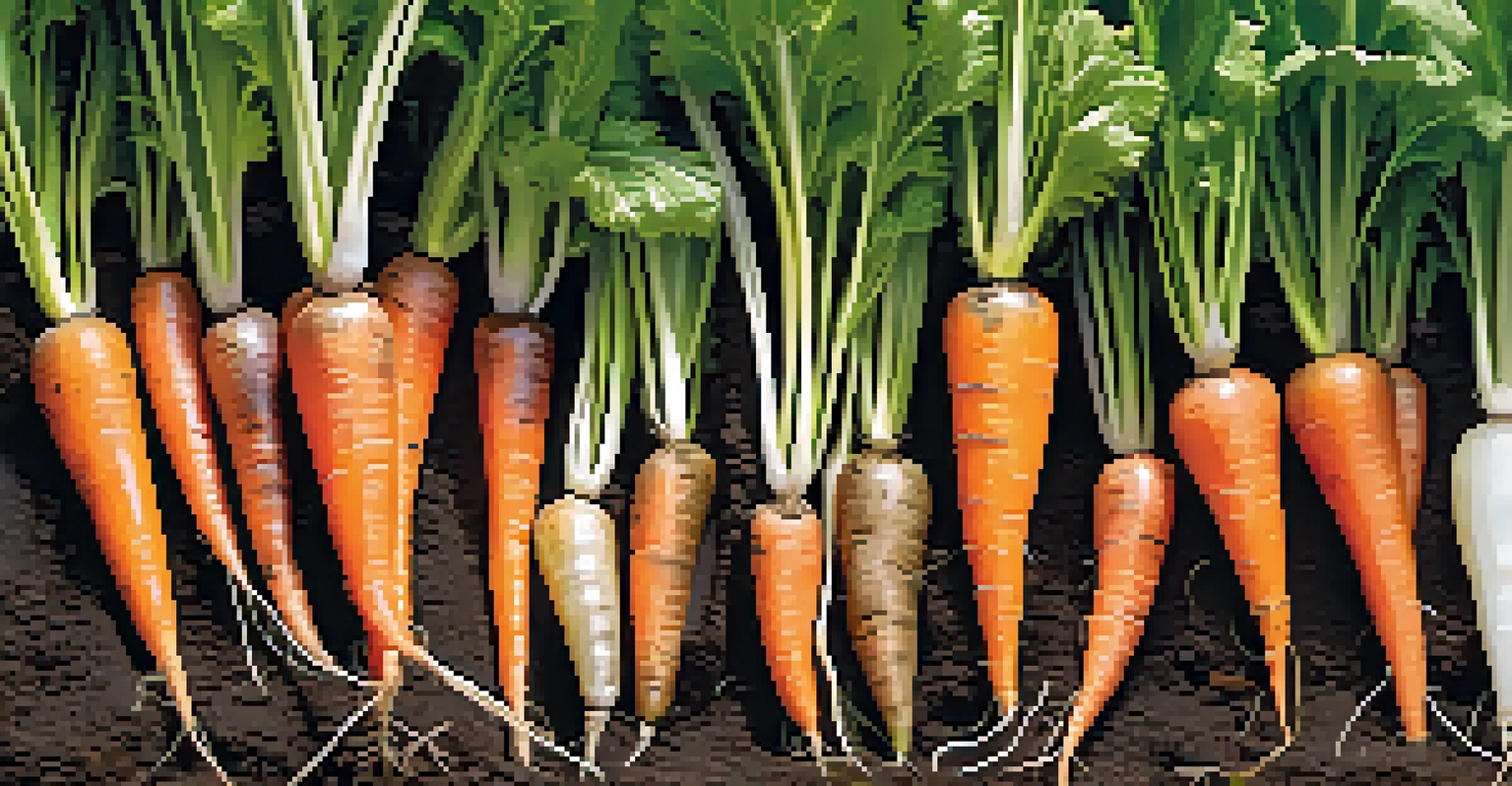Discover Companion Planting: Nature’s Pest Control Strategy

What is Companion Planting and Its Benefits?
Companion planting is the practice of growing different plants together for mutual benefits. This method can boost plant growth, deter pests, and improve flavor. For instance, planting basil alongside tomatoes can enhance their flavor while repelling harmful insects.
Companion planting is the practice of growing different plants together for mutual benefits.
Beyond pest control, companion planting can also improve soil health. Certain plants can fix nitrogen in the soil, benefiting their neighbors. This natural collaboration creates a more thriving garden ecosystem, reducing the need for chemical fertilizers.
Additionally, companion planting can increase biodiversity in your garden. A diverse plant community attracts beneficial insects and pollinators, which can further enhance plant health. So, this strategy not only protects your plants but also fosters a vibrant garden environment.
Historical Roots of Companion Planting
Companion planting isn’t just a modern gardening trend; it has deep historical roots. Indigenous cultures have practiced this technique for centuries, using traditional knowledge to create sustainable gardens. The famous 'Three Sisters' method, which involves corn, beans, and squash, is a classic example of this ancient wisdom.

These plants work harmoniously together; corn provides support for beans, beans fix nitrogen in the soil, and squash leaves create ground cover to suppress weeds. This age-old method highlights the importance of plant relationships and showcases how nature can guide our gardening practices.
Companion Planting Boosts Growth
Growing different plants together can enhance growth, deter pests, and improve soil health.
By understanding the traditions behind companion planting, we can appreciate its effectiveness even more. It encourages gardeners to respect the natural world and to work in harmony with it, rather than against it.
Choosing the Right Companions for Your Garden
Selecting the right companion plants is crucial for maximizing benefits. Some pairings work beautifully, while others can hinder growth. For instance, marigolds are often planted with vegetables to repel nematodes and other pests, making them a gardener's best friend.
Healthy soil leads to robust plants, which in turn can resist pests and diseases more effectively.
When planning your garden, consider factors like plant height, nutrient needs, and growth habits. For example, tall plants can provide shade to shorter ones, creating a microclimate that benefits both. Researching and understanding these relationships can lead to a thriving garden.
Don't forget to consider flowering times and colors, too! Attractive flowers can lure pollinators, while specific combinations can deter pests. Overall, thoughtful planning can transform your garden into a harmonious sanctuary.
Common Companion Plant Pairings to Try
Exploring popular companion plant pairings can kickstart your gardening journey. A classic duo is carrots and onions; onions can deter carrot flies, while carrots benefit from the onion's presence. This pairing is not only practical but also maximizes space in your garden.
Another interesting combination is cucumbers and radishes. Radishes can help deter cucumber beetles, allowing cucumbers to thrive. Plus, radishes grow quickly, meaning you can enjoy a harvest while waiting for your cucumbers to mature.
Historical Wisdom in Planting
Indigenous cultures have long used companion planting techniques, such as the 'Three Sisters' method, to create sustainable gardens.
Don't overlook the benefits of herbs in your garden. For example, planting dill near cabbage can repel cabbage worms. By experimenting with different combinations, you can find what works best in your unique gardening environment.
Understanding Pest Control through Companion Planting
Companion planting serves as a natural pest control strategy, reducing the need for harsh chemicals. Many plants exude scents that confuse or deter pests, leading to healthier plants. For instance, planting garlic can deter aphids, making it a valuable addition to any garden.
In addition to repelling pests, some plants can attract beneficial insects. For example, planting flowers like yarrow can bring in ladybugs, which feast on aphids. This creates a natural balance, allowing pests to be controlled without chemical interventions.
Ultimately, companion planting fosters a self-regulating ecosystem. By encouraging beneficial insects and deterring harmful ones, gardeners can maintain a healthy garden environment, reaping the rewards of nature’s own pest control.
Soil Health and Nutrient Enhancement
Beyond pest control, companion planting significantly enhances soil health. Certain plants, like legumes, can fix nitrogen in the soil, enriching it for neighboring plants. This natural fertilization reduces the need for synthetic fertilizers, promoting a more sustainable gardening approach.
Moreover, companion plants can improve soil structure and moisture retention. Deep-rooted plants can help break up compacted soil, allowing for better water and nutrient absorption. This synergy among different plant types creates a more fertile ground for growth.
Effective Pest Control Naturally
Companion planting serves as a natural pest control method, attracting beneficial insects and reducing the need for chemicals.
By focusing on soil health through companion planting, gardeners can cultivate a thriving ecosystem. Healthy soil leads to robust plants, which in turn can resist pests and diseases more effectively, creating a cycle of growth and productivity.
Getting Started with Companion Planting Today
Ready to dive into companion planting? Start by researching which plants thrive together in your region. Many gardening books and online resources provide comprehensive guides on ideal combinations. Begin with a small section of your garden to experiment and observe the results.
Keep a gardening journal to track your pairings and their outcomes. Note which plants thrive together and which ones may struggle. This record will help you refine your approach and build a deeper understanding of your garden ecosystem.

Embrace the journey of learning and adapting your gardening practices. Companion planting is a dynamic process that evolves with your garden, and the more you engage with it, the more rewarding it becomes.